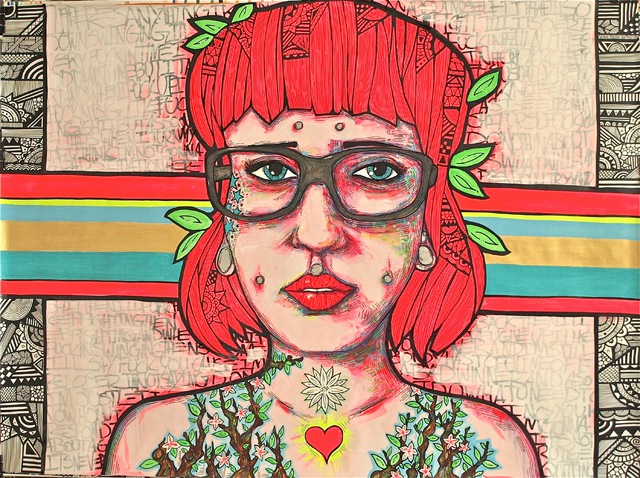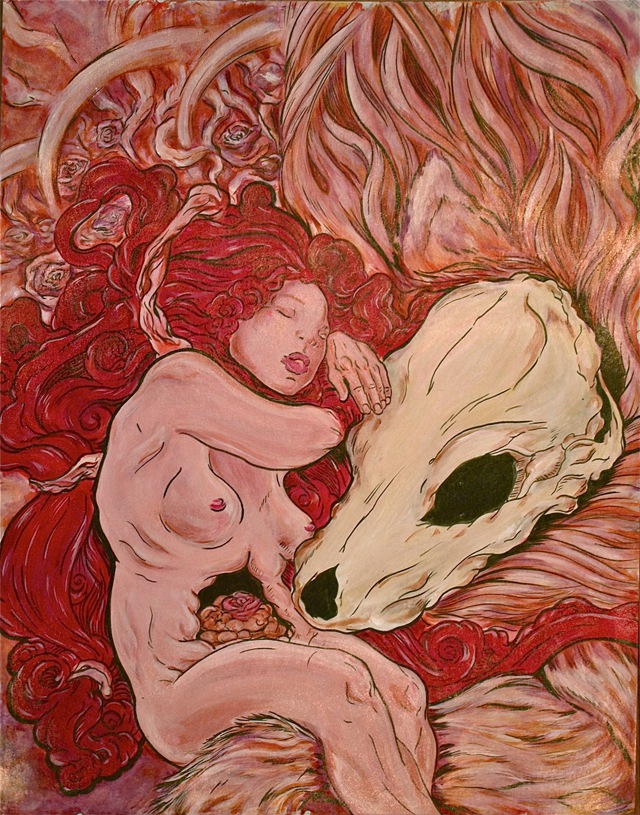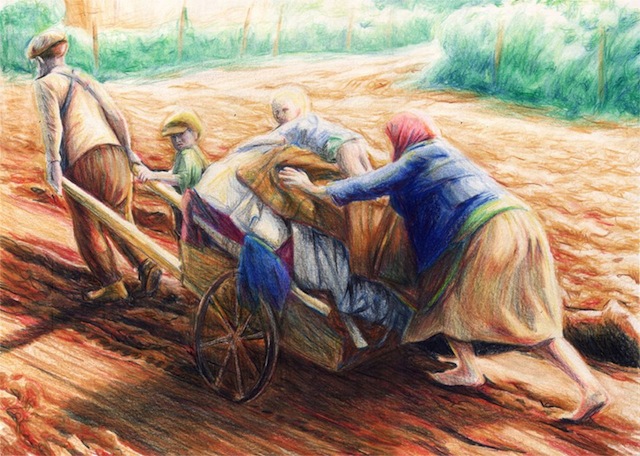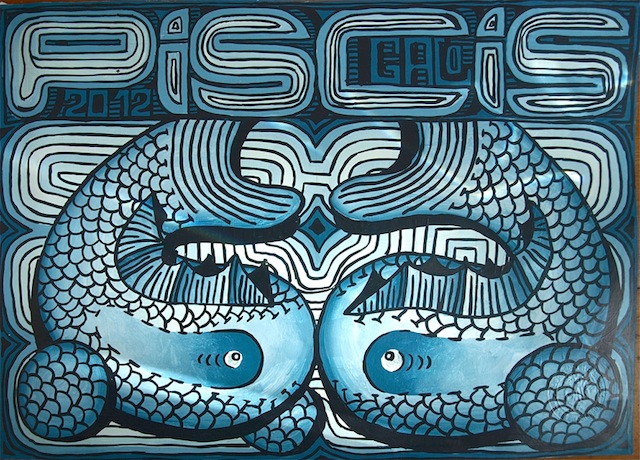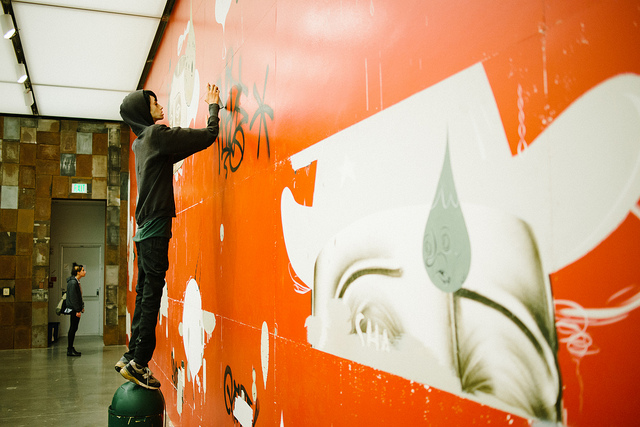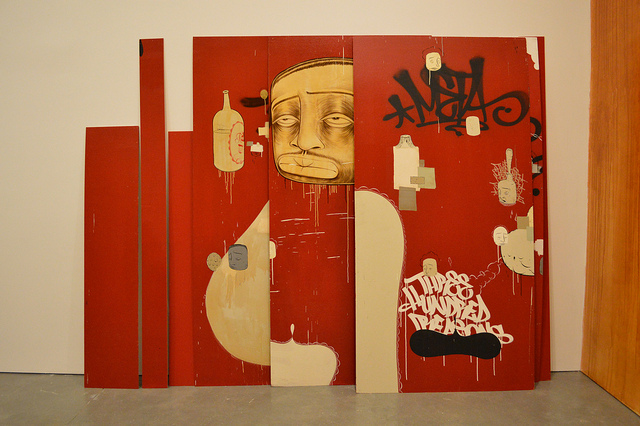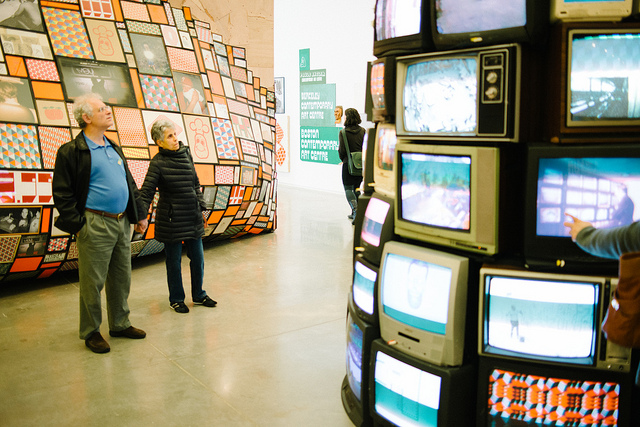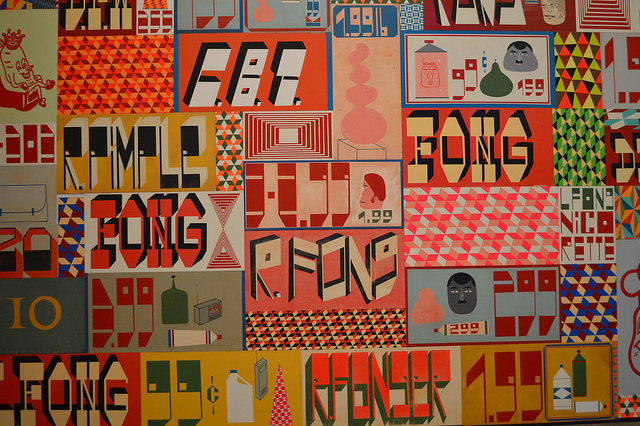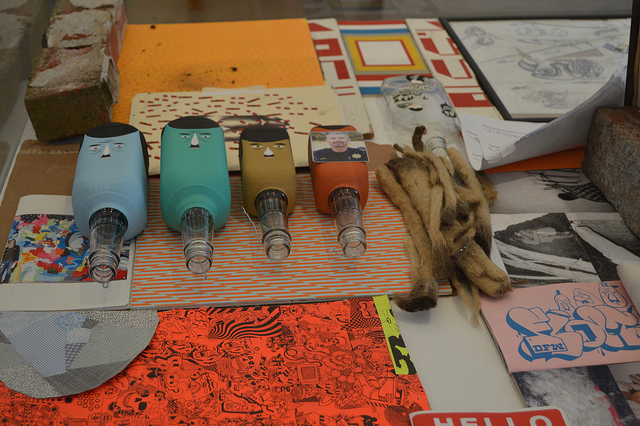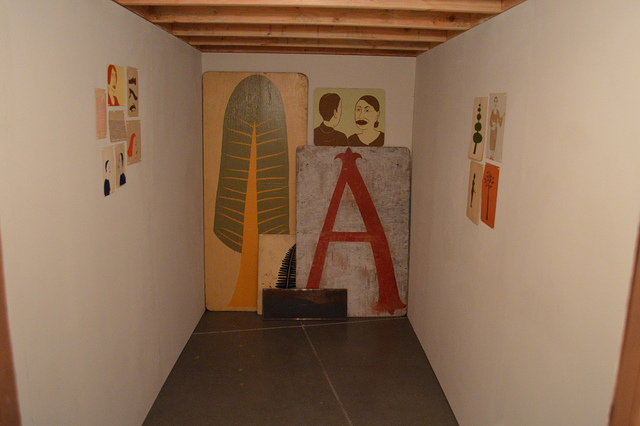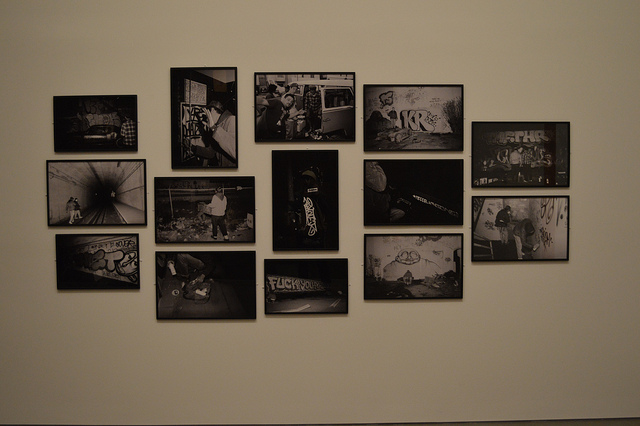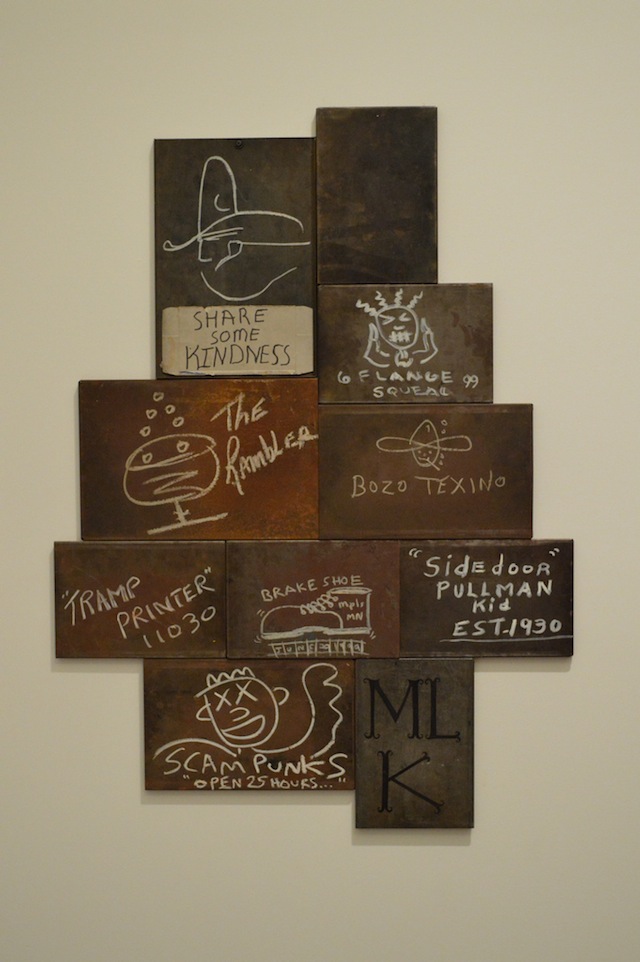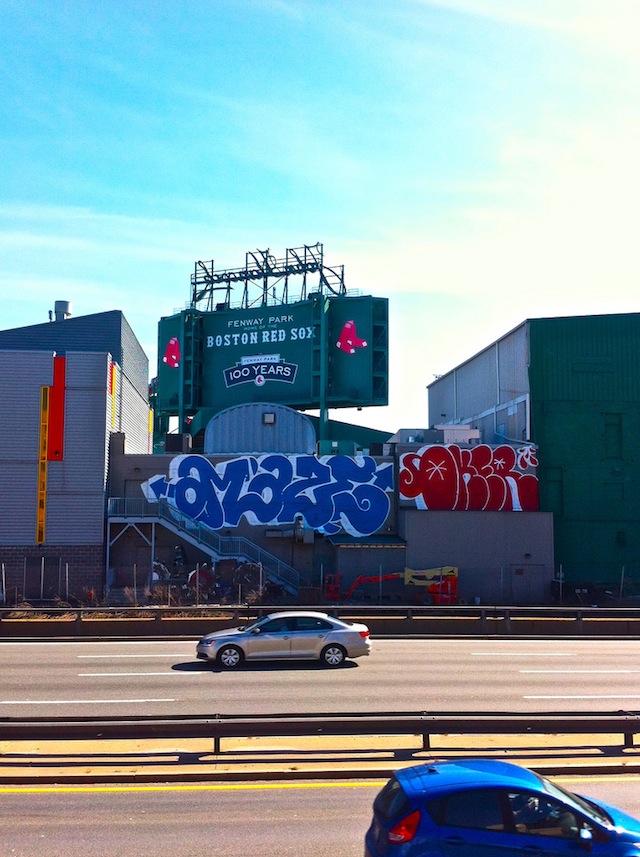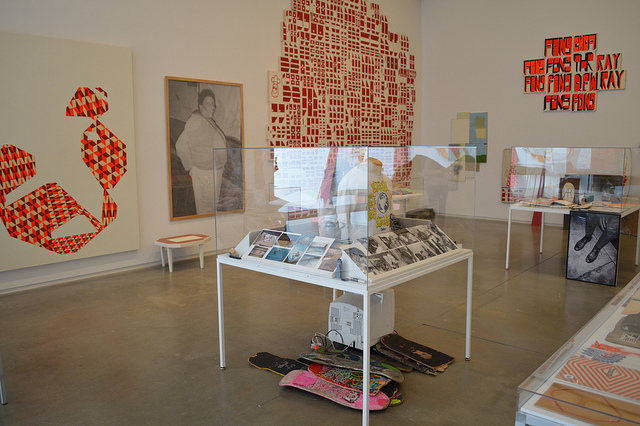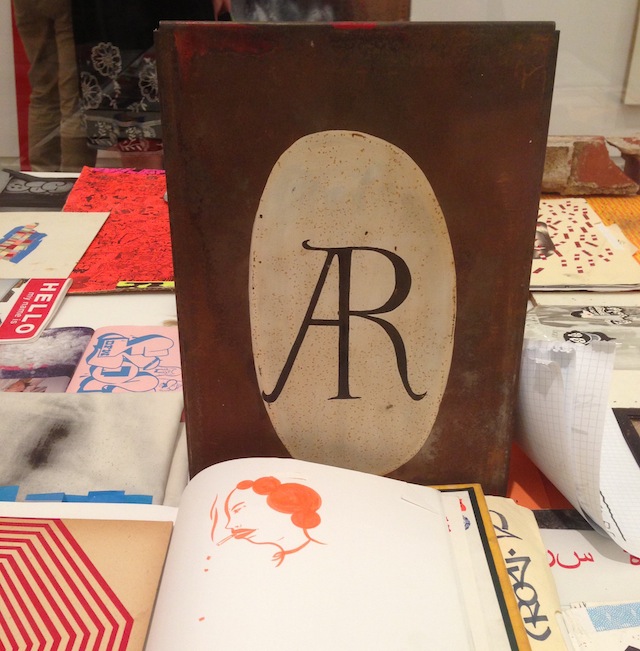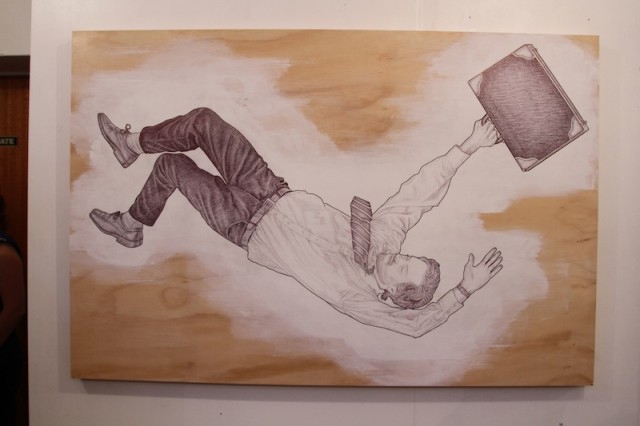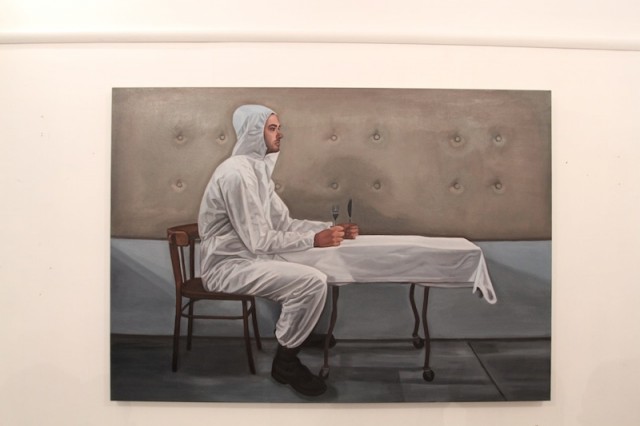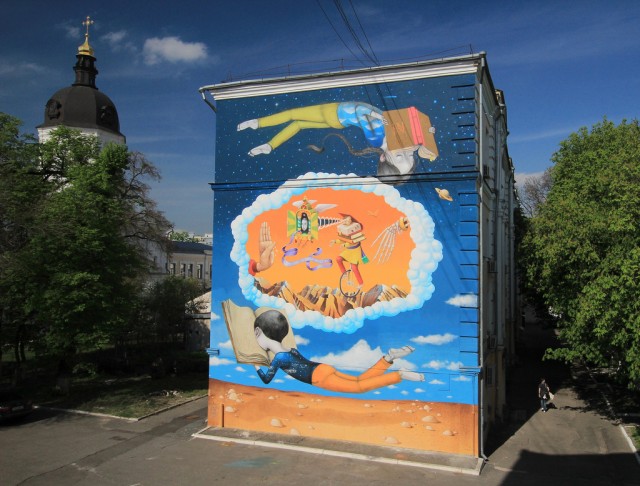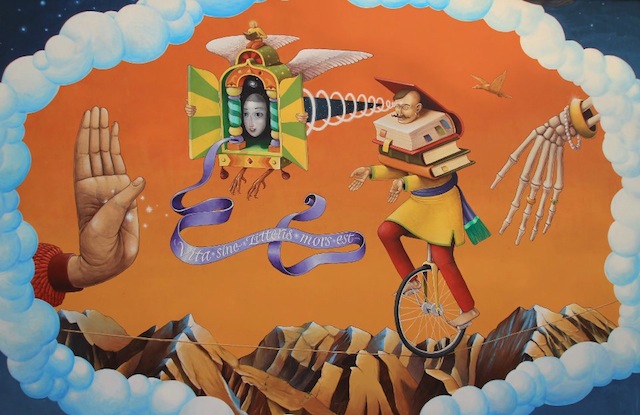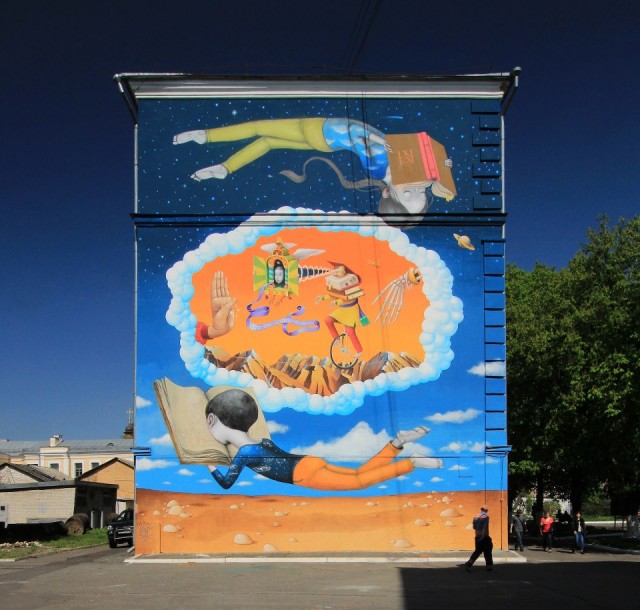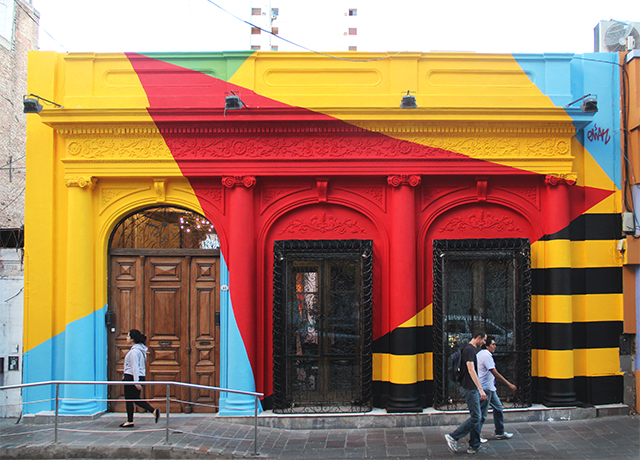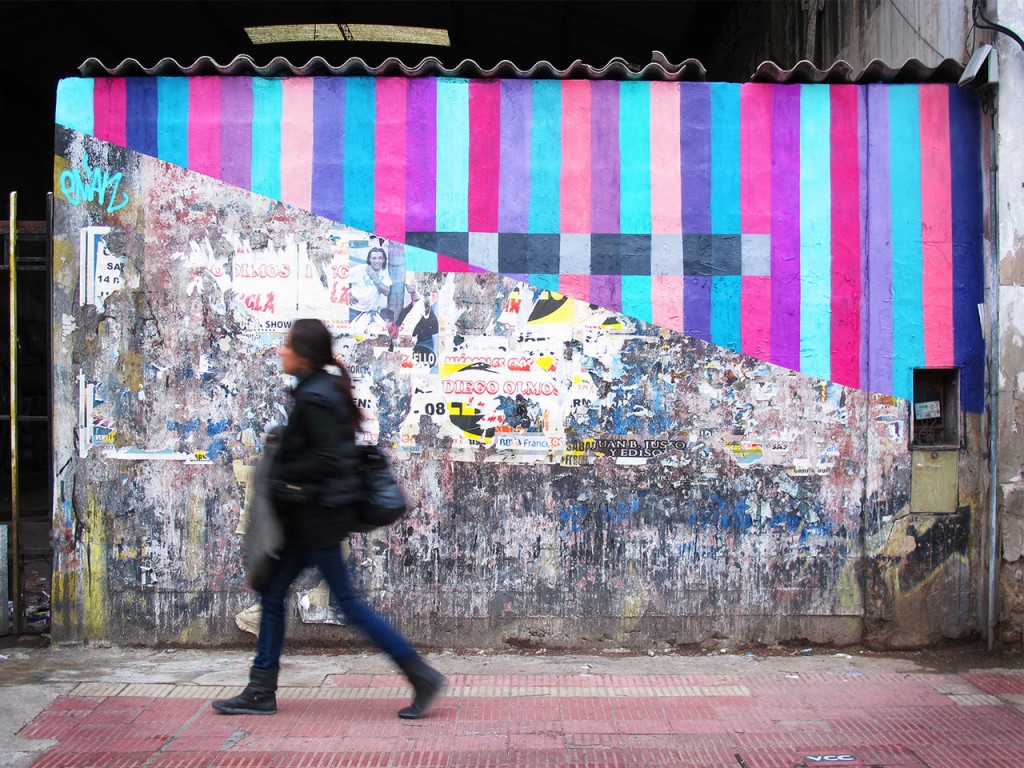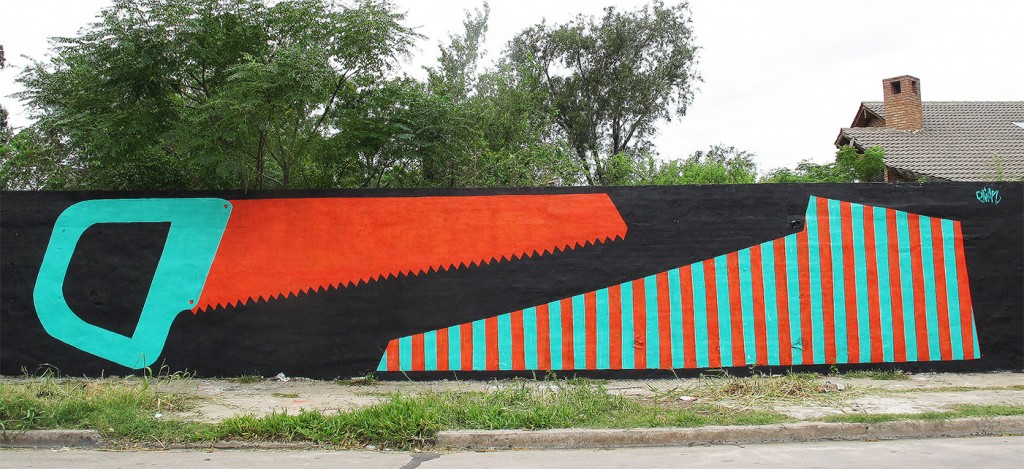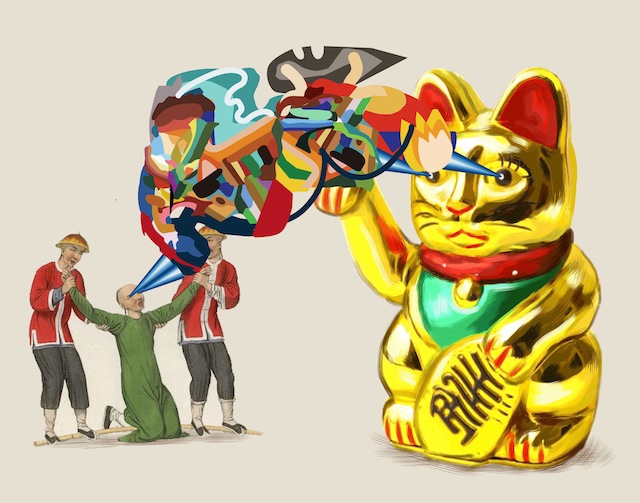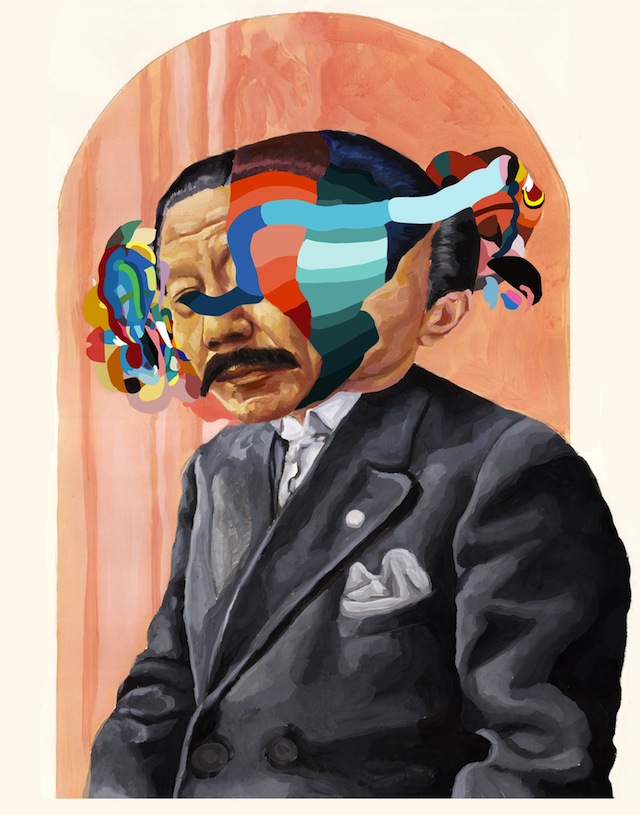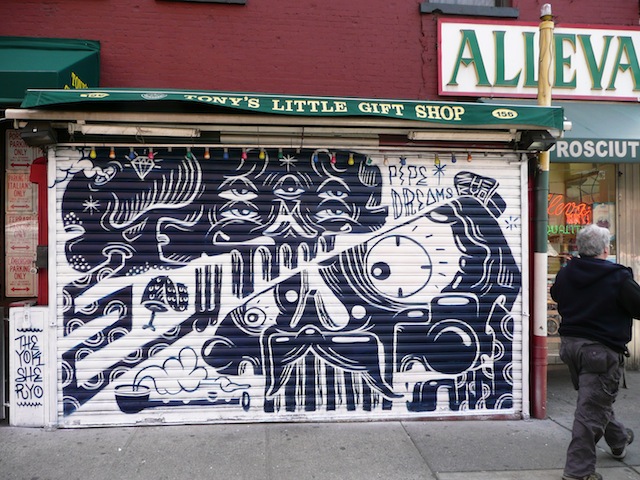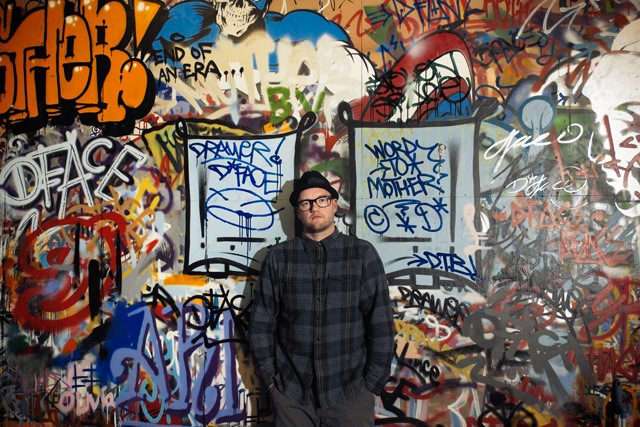
D*Face is a cornerstone of London’s street art community, both for his own art and for the work of his StolenSpace Gallery in Shoreditch. Tim Hans met up with D*Face at his studio for the latest in our continuing series of photo-portraits of artists by Tim Hans, and I asked him a few question about his work and the recent controversy with Charles Krafft, who has shown at StolenSpace Gallery.
RJ: Until recently, I was sure that one of the best shows I’d ever seen was the Charles Krafft and Mike Leavitt show at your gallery Stolenspace in 2010. Now, it’s come up that Krafft’s supposedly ironic work confronting white supremacy and Nazism is not so ironic after all, and that Krafft himself is a Holocaust denier and white nationalist. What’s your take on Krafft’s work in light of these revelations?
D*Face: I’ve thought long and hard about this topic and we’ve been asked by many to speak about his Holocaust denial statement. In truth, it is something that can only be answered by Charles himself, and I’m not even sure if the context of what he said has been altered and misreported. In my experience, I never felt any sense of him being a white nationalist in the conversations we’ve shared over for his shows, so if that is truly the case, he kept this extreme view very quiet for a long time.
What I will say is my father fought in WW2 and my grandfather WW1 and WW2 where they saw many atrocities that had been carried out under the banner of the Swastika and Hitlers Nazi rule, of which there’s no denying. I always found Charles Krafft a deeply interesting character, he has led an incredible life, often well off the grid, with people from very varied and extreme backgrounds and cultures. He has an air about him of being an antagonist, even anarchist, in the true sense of the word, which when combined with his life experience and amazing knowledge makes for a very complex character. I enjoyed talking to him in depth about the numerous, often bizarre, subjects he’d researched… you could even call ‘lived.’ It also wouldn’t surprise me at all if he’s spun all this to garner attention to his work, maybe not the best of ideas, but the saying ‘there’s no such thing as bad press’ could perhaps apply here… For me, his work is deeply challenging, uncomfortable and often disturbing, even when viewed prior to his recent statements. Do these recent statement make his work more or less powerful and provocative? Do you as the viewer have to share his alleged beliefs to appreciate his art and the challenging narrative? Maybe a more interesting debate would be ‘are we more interested in the artist than their art?’
RJ: The trend in recent years seems to be that artists who can get legal walls are going bigger and bigger, often leaving the small interventions behind, but you keep mixing things up outdoors with a combination of large, legal projects and tiny, simple interventions and everything in between. Why?
D*Face: That’s a really good question, and ironically I was pondering this recently while painting my biggest mural on a 60ft x 50ft wall in Puerto Rico. I spent 7 days up a cherry picker without a harness on unstable ground with the unsafe warning going off… I really thought LONG AND HARD about the ‘bigger is better’ legal murals that have become de rigueur. The answer to those big murals is the end result, the sheer volume of paint and impact, but there is a certain something lost. For me, it had always been about the ‘lurking’ round the corner intervention, the turning a corner and making that discovery that felt special, like you’re the only one that has found or seen it. The pieces that maybe only last a day or even less, but are able to change a passer byes day, put a smile on their face, or a frown… It’s those thoughts and ideas, the small interventions that still get me excited, as well as the big walls… I don’t think it can only be about scale, there’s always someone prepared to go bigger, more complex, paint faster, do more… but for me that’s not what it’s all about, so I’ll continue to try and mix it up.
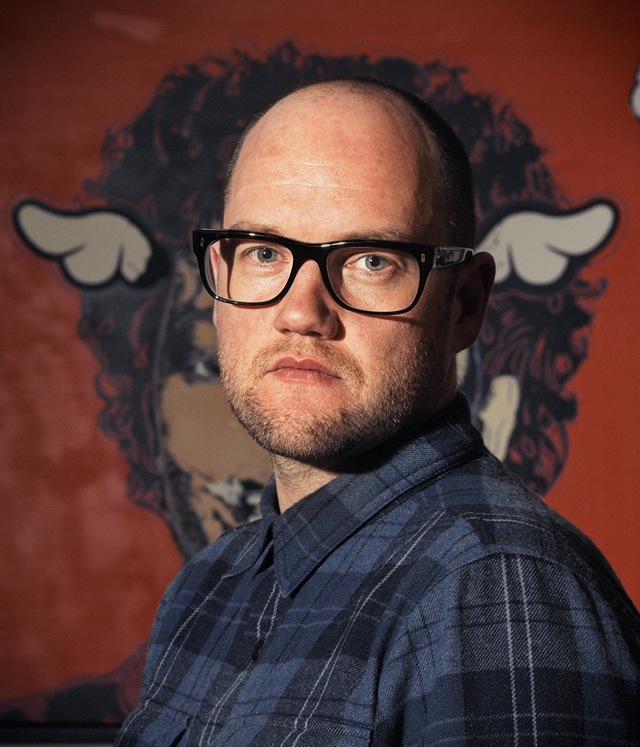
RJ: For me, your collaboration with Smirnoff is the quintessential example of an artist working with a brand in the right way, because you were able to make something that looked like your work rather than their vision of your work, but you got to use the massive resources of Smirfnoff to pull the project off. How did you pull that off?
D*Face: I really appreciate those words, thank you. Believe me, what wasn’t seen on the night was the years of discussions that went before it. It started off nearly 3 years ago with the ‘we’d like a bottle wrap, neck label’ email, which turned into an apprehensive meeting… at which point I said ‘thank you, but no thank you.’ But with all fairness to Smirnoff and Nude, the design agency who set the meeting up, they asked me back to present an open concept of what I would do as an ‘artist collaboration’… So I threw them some seriously full tilt ideas- the one that went ahead was probably about middle ground, so you can just imagine some of the concepts… but instead of running away scared, they fully embraced my idea and we set about making it actually happen. The problem of working with such a large corporation is that it takes a long time for the head to make the tail turn, and several times it was called off and then resurrected. Unfortunately, when you say with ‘the massive resources of Smirnoff’ it simply wasn’t the case. For what we achieved, we had a really tight, small budget and it was only by pulling in a huge favour from my friend, Ben Wilson, to help build and fabricate. By our resourcefulness, we managed to achieve that one night event to the level I aspired. I must say though, that at all times, Smirnoff kept with me on the concept and didn’t try and steer it back down the bottle wrap route, which seeing as thats the most obvious and well trodden route it would have been so easy for them to try and do.
RJ: What’s on the horizon? Anything you can hint at?
D*Face: Ok, you get the scoop. I have a new London solo show that is set to open in June this year… ‘New World Disorder.’ So, I’m in the thick of works and plans for that…It’s going to be really special– certainly a unique venue and event!
I’ve also just signed off the proofs for my long-in-the-works book that I’ve been working on in the background for well over a year. It is being published in September and I’m extremely pleased with how it looks. There’s a few other pretty exciting things in the mix, but I’m superstitious so until they’re 100% confirmed I’m keeping quiet!
Photos by Tim Hans


